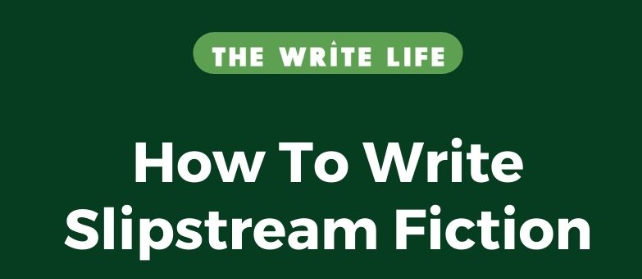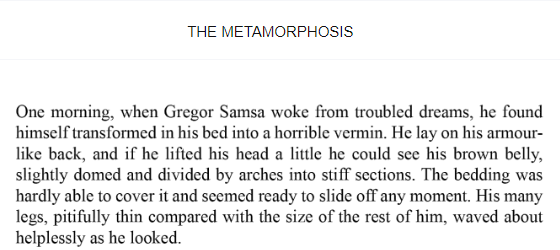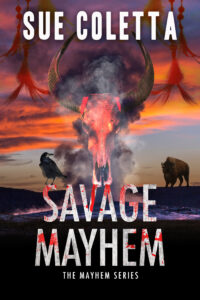Today’s Words of Wisdom returns to an evergreen topic: villains. We love to hate them. Our fiction needs them. They help drive the plot. Understanding the importance of villains can be the key to writing more engaging and gripping mysteries and thrillers.
Clare Langley-Hawthorne, James Scott Bell and Debbie Burke give advice and tips on creating better villains in your fiction. Afterwards, please give us your take.

It can often be all too easy to fall for the ‘psychotic’ serial killer or other sort of evil cliche without trying to provide for the reader a solid grasp of what lies behind this. Villains rarely consider themselves villains. Sometimes they feel justified (in their own perverted way) or compelled by something to do what they do. Unlike in real life, in fiction, we can often provide the reader with a rationale for someone’s behaviour.
So how do you create a believable villain? How do you ensure that, when it comes to the battle between good and evil, neither side slides into caricature? I’ve been thinking about this a lot in my current WIP and I have some to a few conclusions (or observations, at least) as I go through this process:
1. Characters don’t think they are dumb so don’t make them do ‘dumb’ things just because they are (cue manic Dr. Evil laughter) the bad guy.
2. Don’t fall into the trap of making evil generic. For every character there needs to be a specific reason, cause or motivation for his or her behaviour. The more specific and believable this is, the more believable a character will be.
3. Give you villain a clear objective. I’m not a big fan of the psycho who just seems to do stuff because he is, well, ‘psycho’ – this always seems to the to dilute the power of having an antagonist.
4. Think as much about the back story for your villain as you do for the protagonist of the story – this will ensure the character behaves consistently and with clear purpose. It also helps you avoid falling into a cliche if you have a fully realized back story.
Clare Langley-Hawthorne—July 23, 2012
Dean Koontz wrote, “The best villains are those that evoke pity and sometimes even genuine sympathy as well as terror. Think of the pathetic aspect of the Frankenstein monster. Think of the poor werewolf, hating what he becomes in the light of the full moon, but incapable of resisting the lycanthropic tides in his own cells.”
All this to say that the best villains in fiction, theatre, and film are never one-dimensional. They are complex, often charming, and able to manipulate. The biggest mistake you can make with a villain is to make him pure evil or all crazy.
So what goes into crafting a memorable villain?
- Give him an argument
There is only one character in all storytelling who wakes up each day asking himself what fresh evil he can commit. This guy:

But other than Dr. Evil, every villain feels justified in what he is doing. When you make that clear to the reader in a way that approaches actual empathy, you will create cross-currents of emotion that deepen the fictive dream like virtually nothing else.
One of the techniques I teach in my workshops is borrowed from my courtroom days. I ask people to imagine their villain has been put on trial and is representing himself. Now comes the time for the closing argument. He has one opportunity to make his case for the jury. He has to justify his whole life. He has to appeal to the jurors’ hearts and minds or he’s doomed.
Write that speech. Do it as a free-form document, in the villain’s voice, with all the emotion you can muster. Emphasize what’s called “exculpatory evidence.” That is evidence that, if believed, would tend to exonerate a defendant. As the saying goes, give the devil his due.
Note: This does not mean you are giving approval to what the villain has done. No way. What you are getting at is his motivation. This is how to know what’s going on inside your villain’s head throughout the entire novel.
Want to read a real-world example? See the cross-examination of Hermann Goering from the Nuremberg Trials. Here’s a clip:
“I think you did not quite understand me correctly here, for I did not put it that way at all. I stated that it had struck me that Hitler had very definite views of the impotency of protest; secondly, that he was of the opinion that Germany must be freed from the dictate of Versailles. It was not only Adolf Hitler; every German, every patriotic German had the same feelings. And I, being an ardent patriot, bitterly felt the shame of the dictate of Versailles, and I allied myself with the man about whom I felt perceived most clearly the consequences of this dictate, and that probably he was the man who would find the ways and means to set it aside. All the other talk in the Party about Versailles was, pardon the expression, mere twaddle … From the beginning it was the aim of Adolf Hitler and his movement to free Germany from the oppressive fetters of Versailles, that is, not from the whole Treaty of Versailles, but from those terms which were strangling Germany’s future.”
How chilling to hear a Nazi thug making a reasoned argument to justify the horrors foisted upon the world by Hitler. So much scarier than a cardboard bad guy.
So what’s your villain’s justification? Let’s hear it. Marshal the evidence. Know deeply and intimately what drives him.
- Choices, not just backstory
It’s common and perhaps a little trite these days to give the villain a horrific backstory and leave it at that.
Or, contrarily, to leave out any backstory at all.
In truth, everyone alive or fictional has a backstory, and you need to know your villain’s. But don’t just make him a victim of abuse. Make him a victim of his own choices.
Back when virtue and character were actually taught to children in school, there was a lesson from the McGuffey Reader that went like this: “The boy who will peep into a drawer will be tempted to take something out of it; and he who will steal a penny in his youth will steal a pound in his manhood.”
The message, of course, is that we are responsible for our choices and actions, and they have consequences.
So what was the first choice your villain made that began forging his long chain of depravity? Write that scene. Give us the emotion of it. Even if you don’t use the scene in your book, knowing it will give your villain scope.
James Scott Bell—October 26, 2014
I wrote mysteries like I read mysteries, from a state of ignorance, constantly trying to figure out what was going on.
I had a general idea of the bad guy’s motive, but never paid much that attention to the schemes and machinations happening offstage. All action took place onstage because the first or close third POV required the sights, sounds, smells, and emotions be filtered through the protagonist only. My focus stayed stuck on the hero.
The bad guy hid in the shadows behind the curtain until the big reveal at the end. Unfortunately he’d been hiding from the writer too!
Finally, thanks to the wise folks at TKZ, I recognized the big fat blind spot in my books.
Here’s the epiphany:
In crime fiction, the antagonist drives the plot. Unless a crime has been committed, or is about to be committed, there’s nothing for the protagonist to do. The antagonist acts, the protagonist re-acts.
I’d been following the wrong character around all these years!
My realization probably seems like a big DUH to many crime authors. But I’m sharing it in hopes of helping others like myself who overlooked the obvious.
It’s fun to think like a villain! When I started writing from the bad guy’s POV, a whole new world opened up—a world without conscience, constraints, or inhibitions.
Jordan’s great post from last May says, “The best villains are the heroes of their own stories.”
Actor Tom Hiddleston says, “Every villain is a hero in his own mind.” Most actors would prefer to sink their fangs into the role of a great villain than play the good guy.
The baddies in my earlier books had been flat and dull because I’d never gotten inside their heads. Finally, the missing element became clear and…my book won a publishing contract!
Why is the villain willing to steal, cheat, and kill? What rationalizations justify the harm done to others?
A sociopath comes up with perfectly logical justifications and excuses for abhorrent actions.
Irresistible influences like greed, power, and lust can seduce an ordinary person over to the dark side.
Misguided righteousness can lead to horrendous consequences.
A law-abiding citizen may be forced into a corner where he commits acts he would never do under normal circumstances.
If an author roots around in the antagonist’s brain for a while, background, reasons, and rationalizations for antisocial behavior bubble up. Armed with such knowledge, it becomes impossible to write a two-dimensional character. Jim Bell offers a great technique—try to imagine the villain delivering the closing argument to the jury that will determine his fate.
Do you show the villain’s POV in the story or not? That choice is contingent on subgenre.
In a whodunit mystery, the identity of the villain is typically a surprise at the end. Therefore, that POV is generally not shown to the reader, although some authors include passages from the villain’s POV without revealing the identity.
Suspense and thriller novels often are written from multiple POVs, including the villain’s. When the reader knows early on who the bad guy is, the question is no longer whodunit, but rather will s/he get away with it?
The author can choose to show the antagonist’s POV or keep it hidden. But either way, you need to be aware of it because that’s what’s driving the story forward.
Even if you never show the villain’s POV, try writing scenes inside his/her head.You don’t need to include them in the book, but the act of writing them gives you a firmer grasp on that character’s deep desires and how those desires screw up other people’s lives. Once you really understand what the antagonist is striving for, that provides a solid framework from which the story hangs.
If you’re in a corner and your hero doesn’t know what to do next, check in with the villain. While the hero is slogging through steps A, B, and C to solve the crime, the bad guy is offstage setting up roadblocks D, E, and F to keep from being caught.
Debbie Burke—September 28, 2017
***
There you have it, advice on writing villains. Today the authors of our three excerpted posts pose the questions to help jumpstart our discussion:
- So how do you approach the process of creating villains? Are there any ‘evil doers’ in novels that strike you as the ‘dumb and dumber’ of their kind? What about the most chilling, compelling and believable villains in fiction?
- What’s your approach to villain writing?
- What is your villain doing right now? Do you prefer to show the antagonist’s POV or keep it hidden?


 Becca Puglisi is an international speaker, writing coach, and bestselling author of The Emotion Thesaurus and other resources for writers. Her books have sold over 1 million copies and are available in multiple languages, are sourced by US universities, and are used by novelists, screenwriters, editors, and psychologists around the world.
Becca Puglisi is an international speaker, writing coach, and bestselling author of The Emotion Thesaurus and other resources for writers. Her books have sold over 1 million copies and are available in multiple languages, are sourced by US universities, and are used by novelists, screenwriters, editors, and psychologists around the world. ker already has her hands full, what with running the busy Fir Grove branch library, helping her flaky actor brother with his latest onstage project, and caring for an orphaned kitten that shows up outside the branch.
ker already has her hands full, what with running the busy Fir Grove branch library, helping her flaky actor brother with his latest onstage project, and caring for an orphaned kitten that shows up outside the branch.


 The other day, I stumbled across writing advice that was only half-true. The advice said to never use yes or no questions in dialogue. The writer made a valid point that yes/no questions stop the action. True. But that’s only half right.
The other day, I stumbled across writing advice that was only half-true. The advice said to never use yes or no questions in dialogue. The writer made a valid point that yes/no questions stop the action. True. But that’s only half right.
